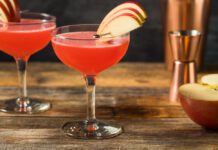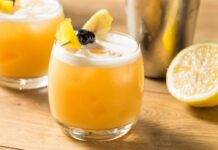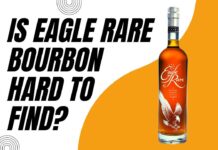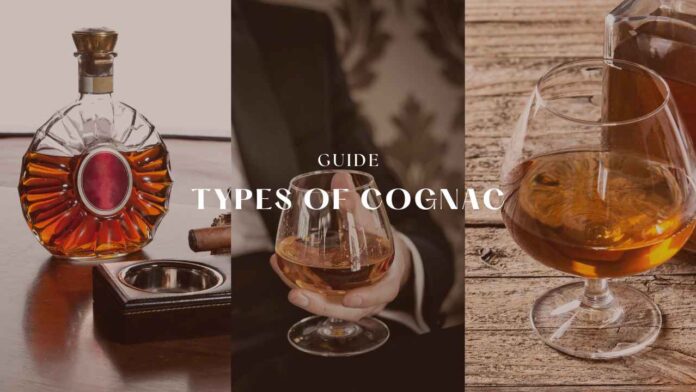This page may contain affiliate links. Please see our Disclaimer for more information. Always drink responsibly and adhere to your local legal drinking age.
Gather ’round, my fellow connoisseurs! There’s no finer spirit in all the world than Cognac. Whether you prefer it neat, stirred into a cocktail, or splashed over ice, everyone enjoys an occasional tipple of one of the oldest and finest spirits. But did you know there are many different types of Cognac?
Each Cognac has a unique flavor and intensity, from the esteemed Rémy Martin to lesser-known brands. The differences between these Cognacs can be subtle, but they do exist. So if you’re looking for a more nuanced experience when enjoying your favorite sipping spirit, let’s explore the many varieties of Cognac together!
Types of Cognac
Cognac is a type of brandy from France and a popular spirit worldwide. It is made from special grape varieties in some regions of France and is one of the oldest and most versatile spirits. There are many types of cognac, from the older XO styles to the younger VSOP.
To help you navigate through all the variations, here’s a list of the three main types:
VS (Very Special) – aged for at least two years, VS cognacs are considered young but full-bodied with spice aromas. This type is usually enjoyed as an aperitif or before dinner to stimulate the palate.
VSOP (Very Superior Old Pale) is usually aged for at least four years; VSOP is mellow with nutty, dried fruit flavors and sweet oaky aromas. This type is perfect for sipping or mixing in cocktails or other drinks.
XO (Extra Old) – XO cognacs are aged for at least six years and have complex aromas and flavors ranging from dried fruit to tobacco and leather. These are best enjoyed neat after dinner or mixed into fancy cocktails like Sidecars or Sazeracs.
VS, VSOP, and XO: What Do the Age Statements Mean?
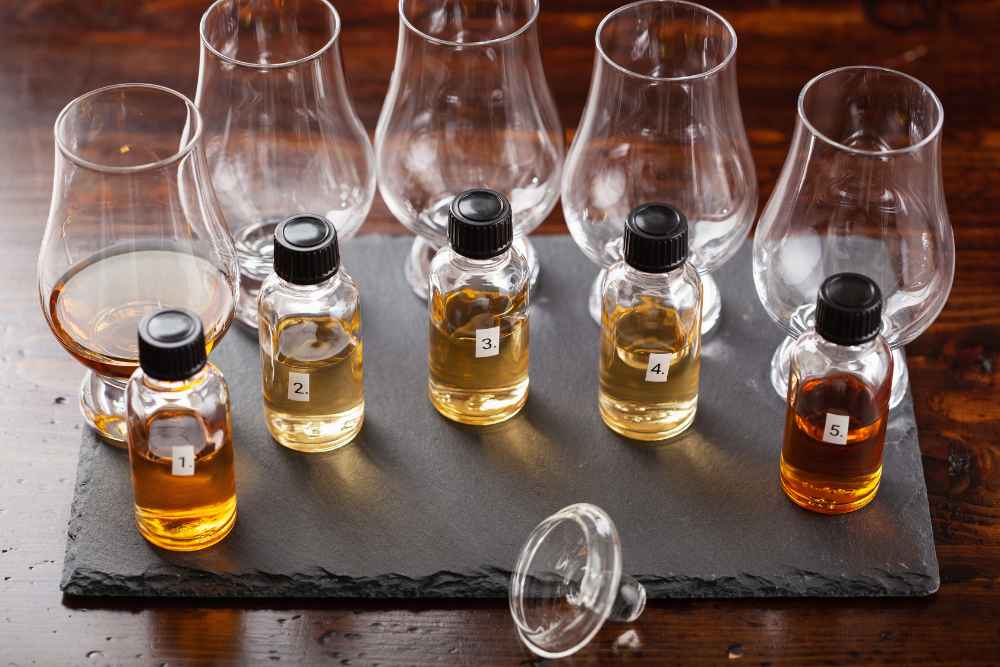
When shopping for cognac, you might encounter a range of age statements on the label: VS, VSOP, and XO. But what do these labels mean?
First, it’s essential to know that all cognacs are made from the same grape variety—Ugni Blanc—and offer similar flavor profiles. So what makes them different? Age. All cognacs must mature for at least two years; however, to be classified as VS, VSOP, or XO, it must meet specific minimum aging requirements.
VS stands for “very special” and must be aged at least two years in oak casks. VSOP (“very superior old pale”) must be aged four to five years in oak barrels or tuffeaux barrels and features a flavor profile with sweet fruit aromas. XO (“extra old”) is a popular term used today to describe a blend of six or older spirits, often spiced with hints of nutmeg and cacao. This is the oldest form of cognac available and is considered the highest quality on the market.
VS Cognac
You may have heard of VS cognac, but do you know what it is? VS stands for “Very Special,” a type of cognac made by blending eaux-de-vie. It’s typically aged for two years or more in Limousin oak barrels. The distinct flavor of VS cognac results from the eaux-de-vie used to create it and the process used during aging.
Blended from different distilleries
VS cognac is always blended from eaux-de-vie from different distilleries. Each batch has its distinct flavor, making it a great entry point for anyone interested in trying different types of cognac.
Temperature controlled aging
VS cognacs are aged in temperature-controlled cellars, which helps to keep the flavor consistent between batches. This ensures that each bottle of VS cognac has a smooth, mellow taste with notes of vanilla, orange blossom, and citrus.
So if you’re looking for an entry point into the world of Cognac, give some VS a try—it’s smooth enough to sip alone but still flavorful enough to mix into your favorite cocktails!
VSOP Cognac
When it comes to types of cognac, you should know about VSOP. As the middle child of cognacs, VSOP stands for Very Superior Old Pale and is aged for at least four years in French oak barrels. It’s an excellent choice for those who want to take their time to savor each sip.
VSOP is slightly darker than the youngest cognac and has a more complex flavor profile that reflects its time spent aging in casks. It typically has woody and nutty flavor notes, with hints of toffee, blackberry jam, and honey, making it a delicious treat. The alcohol content is also slightly higher than its younger counterpart — usually around 40 percent ABV (80 proof).
You can pair VSOP cognac with food or enjoy it neat or with a mixer like ginger ale or ginger beer. You can also use it in cocktails like a sidecar or French 75. If you’re looking for an enjoyable experience full of flavor and complexity, you can’t go wrong with VSOP Cognac!
XO Cognac
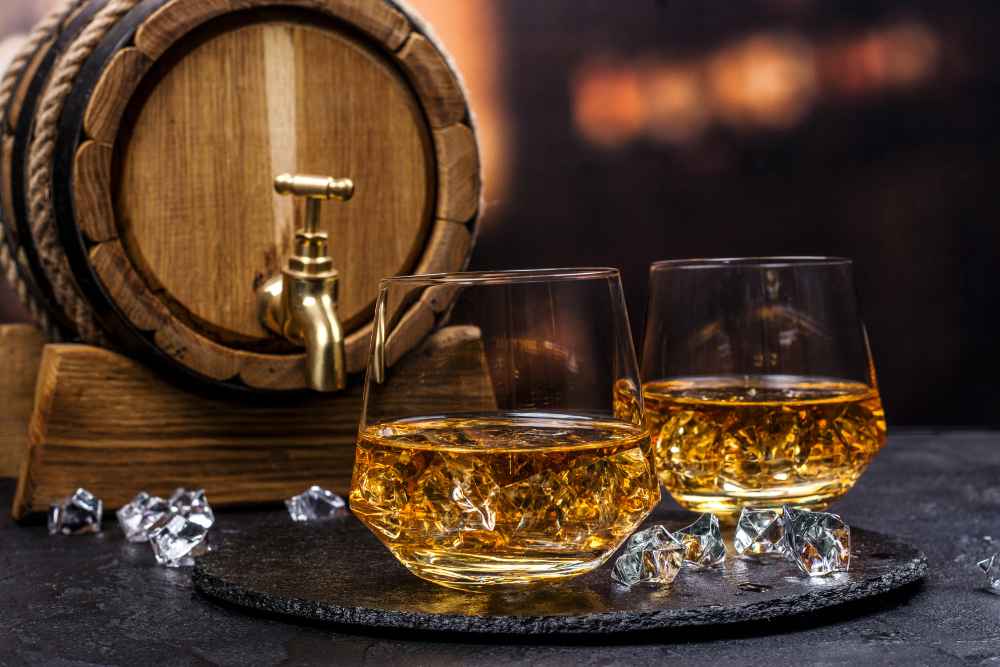
Among all types of cognac, XO cognac stands out for its extra-aged blend. If you’re looking for something unique and exclusive, XO is the way to go.
XO stands for “Extra Old,” It can only be called an XO if the youngest eau de vie in the blend is aged at least 6 years. On top of that, most of the cognacs used for combinations are aged a minimum of 20 years. By comparison, VS cognac must only be aged at least two years before bottling.
XO blends also consist of more than one type of eau de vie, unlike VSOP or VS, which are made with a single blend. The other combinations used in XO add complexity to the flavor profile and make it a great choice if you’re looking to impress your guests or enjoy something exquisite by yourself.
If you’re going to splurge on a bottle of cognac, treat yourself to an XO!
XXO Cognac
A particular type of cognac you might want to try is what’s called XXO. This type of cognac has been aged for at least six years, and it’s considered the highest quality you can buy. It’s the most expensive and robust type of cognac, but its smoothness and complexity will make it worth the price.
Here’s what makes XXO cognac unique:
- It contains brandies from at least four different vintages
- The alcohol content is higher than other types of cognac, ranging from 40% to 43% ABV
- The eaux-de-vie have been aged for at least six years, with some varieties aging upwards of 20 years!
- The color is deep amber or reddish-brown, with aromas of dried fruits like figs, dates, and apricots
- The taste features complex spices such as nutmeg and ginger, plus notes of butterscotch
- It has an incredibly silky smooth palate, unlike many other types of cognac that may have a harsher finish.
XXO Cognac is a rare and exclusive type of cognac that you can only find in certain parts of the world – so if this sounds like something you’d like to try, it’s worth tracking down!
Napoléon Cognac
You may have heard of Napoléon Cognac, but what differentiates it from others? Napoléon Cognac is aged for a minimum of six years, making it slightly older than the youngest cognacs, VS. The taste of a Napoléon is bold and full-bodied, with a subtle sweetness on the finish. It also has a rich amber-brown hue that can make any drink look sophisticated.
Origin
Napoléon Cognac has been produced in France since the 17th century. It was said to be Napoleon Bonaparte’s favorite drink, although most historians now agree that he mostly drank brandy (not necessarily cognac). Regardless, its name stuck, and now we can enjoy this rich and flavorful spirit in our homes.
Taste Profile
Napoléon Cognacs are created with high-quality grapes from Grand Champagne or Petite Champagne—the two best-growing regions for cognac production. This means you’ll get a smooth taste profile with vanilla, oak, grapefruit, and almond notes. It’s perfect for sipping neat or adding touches to classic cocktails like French 75s or sidecars.
If you want to treat yourself to something special, Napoléon Cognac fits the bill! It’s quality ingredients, and smooth taste will satisfy even the most discerning palate.
Hors d’Âge Cognac
If you love top-shelf Cognacs, you probably already know about Hors d’Âge Cognac. It’s the most expensive and sought-after type of Cognac and is made with highly mature eaux-de-vie (aged at least six years in oak) blended uniquely.
The blend can only be made with extremely rare distillates harvested from western France’s Grande Champagne and Petite Champagne regions. The distillation process has become increasingly precise over the centuries, producing an incomparable quality of spirits—the pinnacle of French brandy.
Because of its rarity and sustained popularity, Hors d’Âge Cognac is often used for special occasions like weddings, birthdays, or anniversaries. When poured into a glass, it delivers a fruity aroma and a smooth finish thanks to its complexity—offering notes of fruit, vanilla, honey, spices, and more.
For added exclusivity, many brands even offer personalized bottles packed to order with wooden cases or unique engravings to commemorate your momentous occasion―making it truly one for the ages.
Réserve Cognac
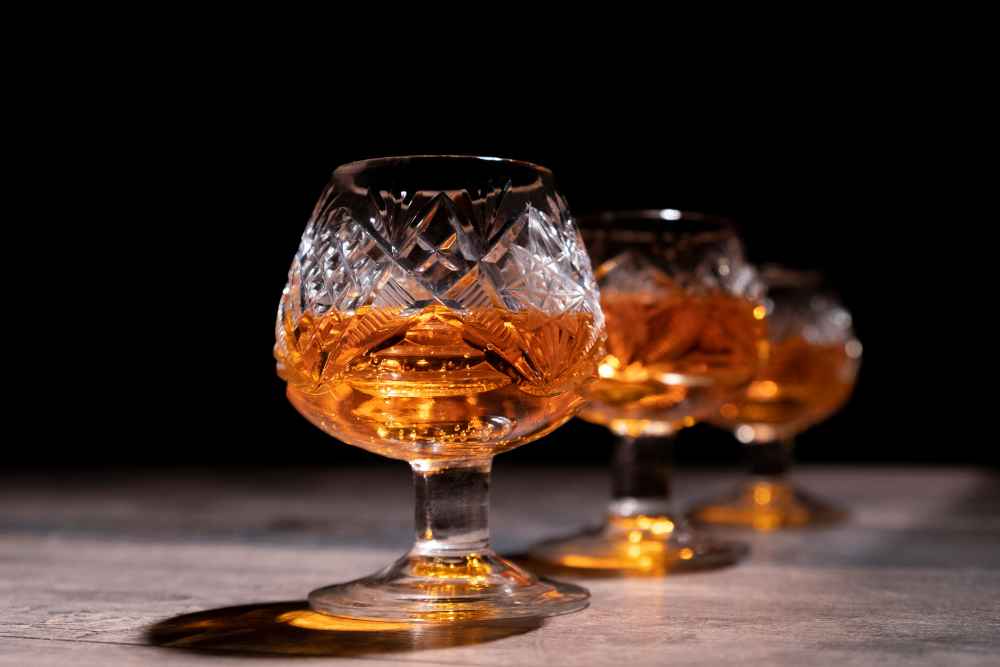
For the most discerning of connoisseurs, there’s Réserve Cognac. This is the top tier, as it must be aged at least five years before bottling. It also has significantly more character and structure than other types.
Réserve Cognac is usually made from a blend of different cognacs, typically a combination of Folle Blanche and Ugni Blanc grapes. The latter variety has higher acidity, allowing the cognac to age longer. This unique blend brings out the bright fruitiness of Réserve Cognac and complex aromatic oils. You can expect a high concentration of floral notes on the bouquet and a long finish with hints of oak char and spice on the palate.
The aging process allows Réserve Cognac to develop unique flavors that can’t be found in other types. It has elements of citrus, lychee, honeyed apricots, plums, and nuts that all create an exquisite taste. With Réserve Cognac, you can truly experience the best that cognac has to offer!
Cuvée Cognac
Not all cognacs are created equal. Enter cuvée cognac, a blend of two or more different cognac vintages. The final product is an expression of both the skill and the artistry of the blending master.
A cuvée cognac may be a single estate, meaning it comes from one vineyard or a blend of several estates. The combinations can take up to five or seven years to create, and the result is a complex bouquet with a unique flavor profile that can’t be found anywhere else.
When you’re looking at cuvée cognacs, here are some things to consider:
- Tasting notes: A cuvée will have its distinct flavor. Look for vanilla, oak, apricot, grapefruit, almond, and blackberry notes.
- Age: The best cuvées can take up to seven years or more to craft. The longer they age, the more robust the flavor profile will be.
- Region: Each region has its terroir, meaning each type of cognac will taste slightly different depending on where it’s made. Most cuvées are made in either the Grande Champagne or Petite Champagne regions.
Borderies Cognac: Floral and Elegant
The Borderies cognac has a unique and elegant flavor that will make you feel like royalty in no time. Borderies come from the smallest region in the cognac region, located in the middle of the other four. It’s done exclusively with Ugni Blanc grapes and is known for its subtle and floral characteristics.
If you’re looking for a sophisticated yet delicately-flavored cognac, Borderies has it all. Its eau-de-vie is incredibly light and smooth, with a beautiful nose full of floral and fruit notes. You’ll find more delicate flavors on the palate, like almond and hazelnut, and a hint of licorice. It’s truly unlike any other type of cognac available on the market.
Borderies also typically spend much longer aging than most other types of cognac — sometimes up to 15 years or more! This aging process helps to bring out an exceptional roundness that enhances its flavors and makes for an even smoother finish on your tongue when consumed. Slowly enjoying this cognac type, you can fully immerse yourself in its aromatic complexity and exquisite taste.
Fins Bois Cognac: Fruity and Full-Bodied
Fins Bois Cognac is a type of cognac with a fruity and full-bodied flavor profile. This variety comes from the Fins Bois region, located north of the smaller Cognac regions of Grande Champagne and Petite Champagne. The soil is primarily chalky clay, giving this cognac its unique flavor.
Regarding cognac, many connoisseurs choose Fins Bois for its distinctive taste. The distillation process for Fins Bois Cognac involves careful maturation in oak barrels for two to three years. This helps to give the cognac its rich and fruity bouquet, with aromas of wild berries and honeycomb, along with some woody notes and a hint of vanilla. On the palate, it’s light yet full-bodied, with a long finish.
These qualities make it great for enjoying neat or the rocks and classic cocktails like sidecars or Vieux Carres. Fins Bois is affordable compared to other cognac varieties, making it an excellent value purchase. So if you’re looking for a versatile choice that won’t break your budget—while still delivering on quality—Fins Bois Cognac might be just right for you!
Grande Champagne Cognac: Smooth and Nutty
If you’re looking for an experience in smoothness and delicacy, you’ll want to try a bottle of Grande Champagne cognac. As the prestigious appellation from Cognac, France, Grande Champagne offers a flavor profile that combines nutty sweetness with a light acidity and subtle oak notes.
Harvesting
The grapes that go into Grande Champagne cognac are harvested by hand in October when they reach peak ripeness. This makes the grapes highly aromatic, with a balanced sugar-acid ratio to ensure their flavors develop well during distillation and maturation.
Distilling and aging
Grande Champagne is double distilled using copper stills—the first distillation creates a spirit called “bouilli,” and the second is to increase its alcohol percentage by volume. It’s then aged in Limousin oak barrels for at least two years—any longer than four years can bring out too much woodiness.
The result is an exquisite cognac with a light amber color, smooth texture, delicate aromas, and flavors of dried fruit such as apricots, plums, and almonds. Its finish is long and mellow, with hints of sweet spices like vanilla or cinnamon.
Petite Champagne Cognac: Balanced and Refined
Petite Champagne Cognac is an extraordinary variety of cognac—distilled from the Petite Champagne region of the Charente and Charente-Maritime departments. This type of cognac is considered one of the highest quality, with a balanced aroma, flavor, and texture. It’s often used to create the finest blend of cognacs.
Petite Champagne Cognac offers a complex flavor profile that has been described as being both intense and delicate. Its complexity has made it one of the more popular choices for mixing drinks. In addition to, its unique flavor profile and balancing characteristics make it an excellent choice for creating unique blends and cocktails.
Making Petite Champagne Cognac involves double-distilling wines from specially selected grape varieties like Ugni Blanc, Folle Blanche, Montils, and Colombard. The double-distillation process ensures that the cognac retains its complex flavors and aroma before it is aged in oak barrels for at least two years – sometimes four or more – to develop its signature smoothness.
The result is a spirit with an exquisite balance between woody, floral, vanilla, and dried fruit notes. Its smoothness makes it ideal for sipping or enjoying as a digestif after dinner. So why not try one tonight?
Rare Cognac Varieties: Single Cask, Vintage and Premium
Did you know that there are rarer varieties of Cognac? Well, there are! Single-cask Cognac is especially rare and unique. It is only available in minimal quantities since it comes from one cask and is produced in one batch. This means you get a Cognac with a unique aroma and flavor profile since they mature differently depending on the barrel and storage location.
Then there’s vintage Cognac, which boasts a slightly smoother flavor profile than other types of cognac. It also matures quickly due to its high proportion of alcohol and sugar content—which adds complexity to the overall flavor.
Finally, there’s premium Cognac, which can range from light to full-bodied. This type of Cognac has unique aromas and flavors, such as hints of vanilla, fruit, spice, nutmeg, or a floral finish. It’s also aged for at least 20 years in oak barrels and can be expensive—but it’s worth it for its unique taste!
Popular Cognac Brands
Now that you know about different types of cognac, let’s explore some of the most popular brands on the market. Here are just a few:
Hennessy
Hennessy is one of the biggest names in cognac, and it has been making world-renowned cognac since 1765. It is made from Ugni Blanc grapes grown in Cognac in France’s Charente region and distills its products in copper stills. Hennessy produces three main varieties of cognac: VS, VSOP, and XO.
Martell
Martell has been producing some of the best cognacs since 1715 and is one of the oldest cognac houses in the world. They make their products with only grapes from Grande Champagne, a Cognac subregion known for producing high-quality cognacs. Martell also offers a range of products, including VS, VSOP, and XO.
Courvoisier
Courvoisier is another well-known brand of cognac that has been around since 1811. Its very own Napoleon was said to have been a fan! The brand produces two main types of cognacs: VSOP and XO. Its VSOP features grapes from four distinct regions — Grande Champagne, Petite Champagne, Fins Bois, and Borderies — for an intense flavor profile.
So if you want to get into cognac, these brands offer great options!
FAQ
You may now have some questions about cognac. We’ve taken the time to answer some of the most commonly asked questions to help you better understand this complex type of brandy.
What is VSOP Cognac?
VSOP stands for “very superior old pale” and is a type of cognac that has been aged for at least four years in oak barrels before it is bottled. VSOP Cognacs are lighter and smoother than the more intensely-flavored XO cognacs.
What is an XO Cognac?
XO stands for “extra old” and is a style of cognac that has been aged for a minimum of 10 years, although some distillers age their XOs for as long as 20 years or more. Because they are older, XO Cognacs tend to be much more intense in flavor than VSOPs.
Is there an age limit on cognac?
No, there isn’t an age limit on cognac. The longer a spirit is aged, the higher quality it tends to be, but it doesn’t necessarily mean it will taste better than younger cognacs depending on individual preferences.
Conclusion
Cognac is an incredibly complex and diverse spirit. While XO and VSOP are the two grades you are most likely to come across, there are many different types of cognac to explore. Each style lends unique characteristics to the cognac and has a distinct flavor profile. A cognac suits every palate, from the fruit-forward and floral VS to the smooth and spicy XO.
Exploring the various types of cognac can be an exciting journey that can bring a world of flavors to your glass. Whether you choose to sip a VSOP or go bold with a XO, it will surely be a unique and enjoyable experience. So, why not take your tastebuds on an adventure as you explore the wonderful world of different types of cognac?



